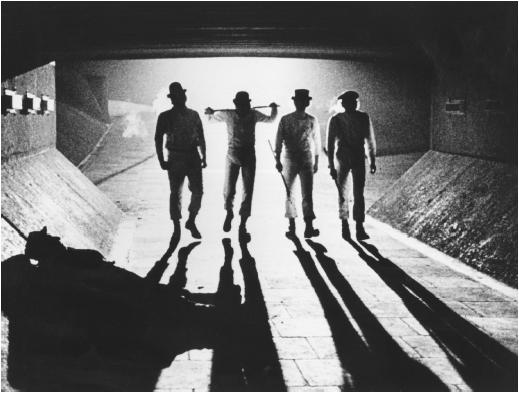 Frank Tashlin is an interesting director to emerge out of 50s Hollywood. He was initially an animator who moved on to live action features, and his abilities to draw out caricatures and exaggerated situations are evident in these latter films. At his best he could use film to mix entertainment with observations on pop culture. In Artists and Models, he explores the craze of comic magazines; in Hollywood or Bust, it's all about the film industry itself; and in The Girl Can't Help It, the emergence of rock n roll is explored. In 1957, Tashlin tackled the advertising industry with Will Success Spoil Rock Hunter?
Frank Tashlin is an interesting director to emerge out of 50s Hollywood. He was initially an animator who moved on to live action features, and his abilities to draw out caricatures and exaggerated situations are evident in these latter films. At his best he could use film to mix entertainment with observations on pop culture. In Artists and Models, he explores the craze of comic magazines; in Hollywood or Bust, it's all about the film industry itself; and in The Girl Can't Help It, the emergence of rock n roll is explored. In 1957, Tashlin tackled the advertising industry with Will Success Spoil Rock Hunter?In a nutshell, this film is about Rockwell P. Hunter who works for an advertising agency (played well by Tony Randall). He's sort of at the lowest rung of the agency, a rather ordinary guy. That is until he finds the perfect endorser for the latest ad-campaign for Stay-Put Lipstick: none other than the blonde bombsell with the 'most kissable lips' Rita Marlowe (played nicely by Jayne Mansfield). The only thing is that Rock has to pretend to be Rita's 'loverboy'. And overnight be finds himself as a 50s Robert Pattinson, with a bevy of fans wanting every piece of him.
Tashlin's film is fully-equipped with luscious technicolor, a nice supporting cast (with Joan Blondell, John Williams and Betsy Drake) and great gags. One of the best gags is when Rita tells Rock he doesn't have to worry that they're the same height because she's bought him 'lifts'. They were commonly used by short men when up against taller leading ladies, such as was often the case with Humphrey Bogart and Charles Boyer. When Rock tries on the shoes he can't quite get the hang of them (mind you, he's also wearing this large suit belonging to Rita's beefy ex) and he sort of stumbles around the room, looking way out of his league. Quite plainly, he doesn't 'fit' into the publicity world of Rita.
On the surface this is a candy confection film that's well-packaged. But through a deeper lens, the film is exploring the manipulative world of advertising. To paraphrase Rock Hunter, advertisements try to convince ordinary people every day that their lives are lacking in something. It promises to fill that void, but really only provides an unattainable fantasy. As we see in today's industries, models are airbrushed, appliances don't always work as they're supposed to and we probably don't really need all those entertainment gadgets out there. As Rock discovers through his brush with fame, he actually likes being a humble, ordinary person. It's at the top of the business that people have problems, always trying to figure out a new way to sell their items and make the person at the bottom content. But it's a life of continued disappointment and pressue and ultimately, unfulfillment. Ordinary as he is, Rock has his family and not even money could substitute for that.
All in all, this is a wonderful film with great characters and great moments (including a sly side-commentary on the take-over of television in the fifties). It's executed well and with a lot to think about. It's a nice treasure of the 50s.

















